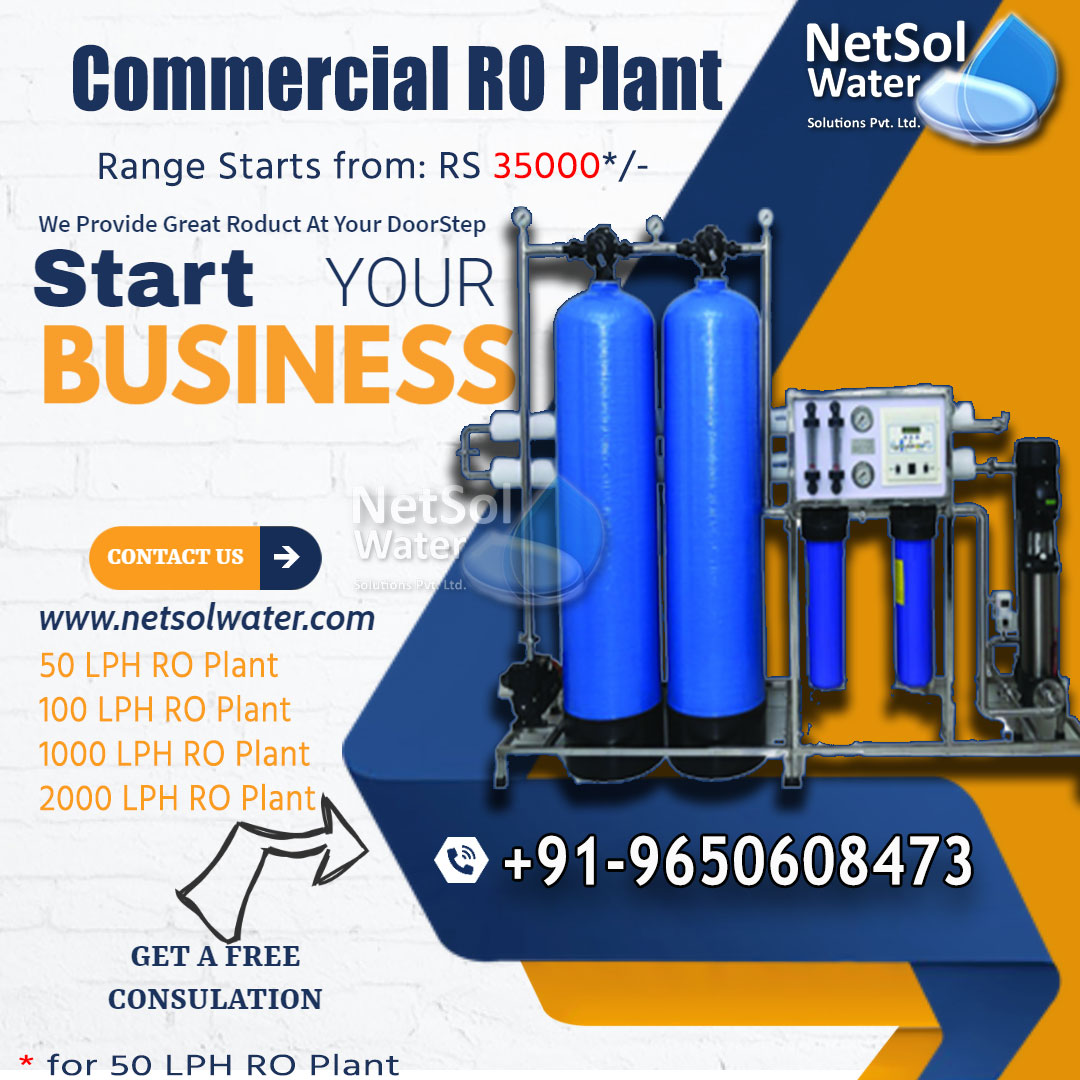What is Industrial RO Plant and how it is Work?
Wastewater treatment plants are highly regarded, and they are used to treat dirty water in a variety of industries. When it comes to RO plants, they are employed both domestically and commercially. Domestic ROs are used to treat drinking water in a variety of households. There are also ROs designed for industrial water purification. Netsol Water is a prominent Industrial RO Plant Manufacturer in India, producing not only water treatment products but also wastewater treatment products such as sewage treatment plants, effluent treatment plants, and compact wastewater treatment plants.
The technology employed in Industrial RO Plants is RO, which stands for Reverse Osmosis in its full form. It is a cost-effective method that is widely employed in large-scale water treatment. It removes all harmful chemicals from water, such as ions, molecules, and other waste particles, and so delivers safe drinking water. This plant provides a broad treatment, and the recovery in this procedure is unique and renowned in comparison to all other treatment plants. A flow diagram presented below clearly shows various steps involved in achieving water in purest possible form:
Raw water booster pump:
A booster pump boosts the flow and pressure of low-pressure water. It gives you the extra boost you need to get your water pressure to where you want it. A water booster pump creates enough pressure to carry water from a storage tank or throughout a home or business.
Quality sand filter:
Sand filtration is a popular and effective method for removing suspended particles from water. The filtration medium is made up of several layers of sand of various sizes and specific gravity. Raw water is passed through RWT Pressure sand filter at a pressure of 3.5 kg / cm2 to reduce the suspended solids present in the raw water. The functioning principle of a Pressure Sand filter is quite simple. Water passes through multiple layers of filter media in a pressure sand filter. The impurities in the water are collected in the media bed, and the shifted water is pumped into the tanks' discharge manifold.
Activated carbon filter:
Activated carbon is a common coal consisting of vegetable or mineral matter that is activated in high-temperature steam ovens. The ability of a bed of activated carbon to trap specific types of molecules inside the structures of its microspores is its most important property.Activated carbon is widely employed in a variety of industries and applications, including water (as well as waste and sewage water) treatment, air treatment, sugar and wine manufacturing, and so on.
Following are some of the most prevalent water treatment applications:
-To get rid of chlorine
-To get rid of an unpleasant taste and odour
-To get rid of contaminants
-To get rid of turbidity
Sediment filter:
Suspended solids are trapped and removed from your water supply by a sediment filter. Stormwater runoff debris and rust flecks from aged pipes can discolour and make your water taste bad. Sediment build-up can destroy appliances by clogging valves and fixtures, as well as ruining hot water heaters. Sediment also makes it difficult for filtration technologies like reverse osmosis and ultraviolet purification to work properly. Sediment filters are an important part of the water filtration process since they keep your water pure.
Multiphase pump:
Multiphase pumping, often also referred to as multiphase boosting, is the transport of liquids and gas as one common mixture. The mixture may also contain a certain amount of particulate, mainly from the reservoir. This technology, today predominantly installed at surface, aims to increase the pressure of the mixture to allow for constant and increased flow in pipelines over longer distances.
RO system:
Reverse osmosis is a technique for removing the bulk of pollutants from water by forcing it through a semipermeable membrane under pressure. Osmosis is a natural occurrence and one of the most essential natural processes. A weaker saline solution will tend to move to a stronger saline solution throughout this process. Plant roots absorb water from the earth, and our kidneys absorb water from our blood, both of which are examples of osmosis.
Pure water tank:
At last the purified water is stored in large pure water storing tanks and in order to ensure proper disinfection.Netsol water solutions uses UV technique to render this water pure free from infections of all types.




